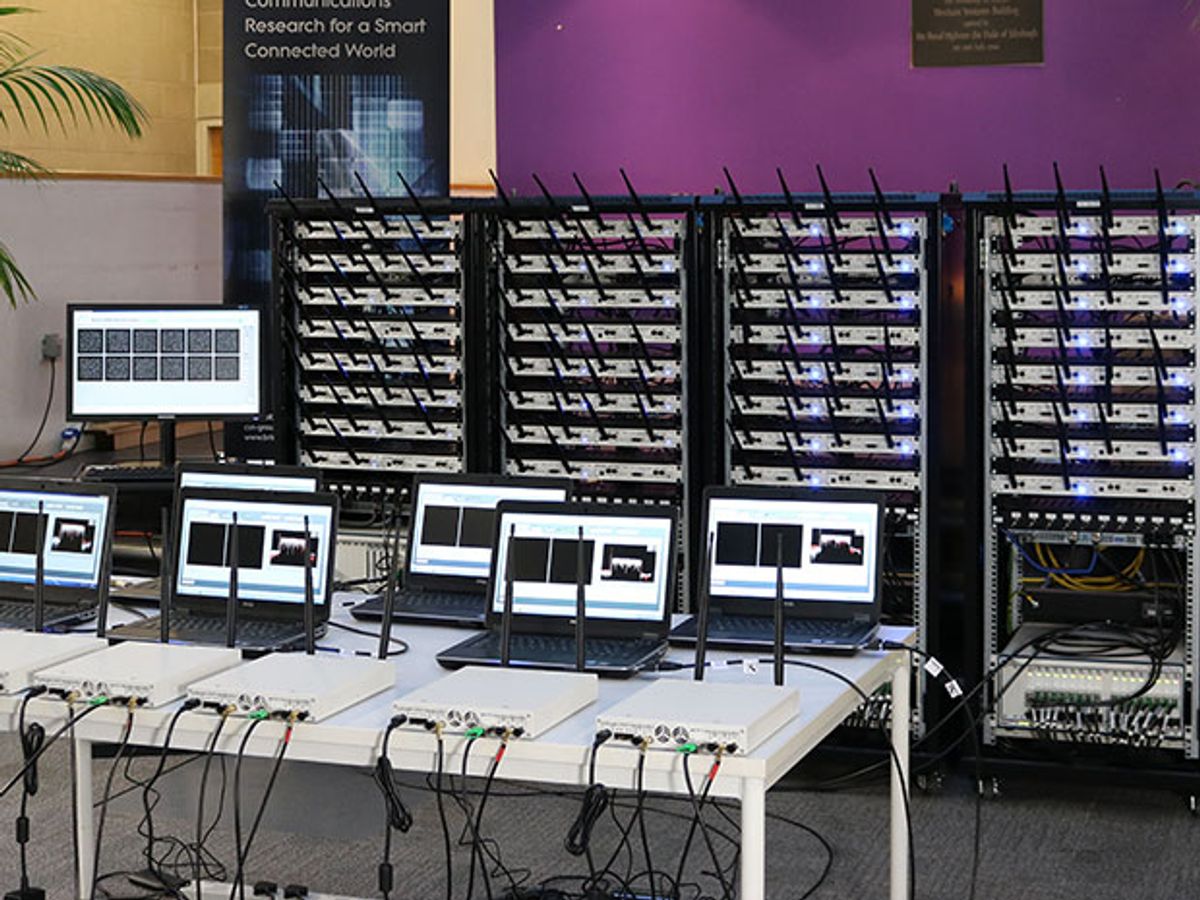A team of 5G researchers has set a new world record for spectrum efficiency. Their achievement with massive MIMO (multiple-input, multiple-output) arrays, which are cellular base stations comprised of dozens of antennas, is further evidence that this technology is a promising option for wireless engineers working to construct networks to deliver ultra-fast data speeds to more smartphones and tablets than ever before.
In an experiment on Wednesday, the groupachieved a rate of 145.6 (bits/s)/Hz for 22 users, each modulated with 256-QAM, on a shared 20 MHz radio channel at 3.51 GHzwith an 128-antenna massive MIMO array. That represents a 22-fold increase in spectrum efficiency over today’s existing 4G networks.
Eight researchers and postdocs from the University of Bristol and Sweden’s Lund University completed the demonstration on the upper level in the atrium of a university building on Bristol’s campus in England. The group was led by Mark Beach, a radio systems engineer at Bristol University.
"It's been quite challenging to get it to come together,” he says. “There's a lot of things that have to happen to get the equipment to work. Mainly—wires."
With the new results, the team beat its earlier record of 79.4 (bits/s)/Hz for 12 users from March, and the rate of 71 (bits/s)/Hz that Facebook achieved for 24 users in April with its 96-antenna ARIES array. While the Bristol team has designed an array that would work best as part of ultra-dense small cell networks in cities, the company is working on massive MIMO for a different purpose—as a way to beam wireless internet to rural areas from within cities.
In the future, users are expected to exchange much more information over the almost instant data transfer offered by 5G. But with consumers already facing a dwindling supply of spectrum, wireless engineers need to find ways to use the available spectrum to exchange all this new data more efficiently without causing delays for everyone.
To achieve this, many groups are focused on massive MIMO, which allows for the simultaneous transfer of many incoming and outgoing messages at once. While traditional cellular base stations might rely on four antennas, a massive MIMO array features dozens that rely on signal processing to find the best and fastest way to route messages to their intended destinations.
Industry has said it will require a 1000-fold increase in capacity in order for 5G to function as envisioned. Not all of that increase must come from massive MIMO, though—many other 5G technologies are in the works including millimeter wave and beamforming.
Erik G. Larsson, who leads the Division for Communications Systems at Linköping University in Sweden, points out that these new results are experimental and not real world. They were achieved in a highly controlled environment with no interference from other cellular signals. The users were stationary while in reality, people and their phones are often in motion.
Still, Larsson says the results are very significant for the field. “I'm very impressed by these experimental results and I think they demonstrate with clarity the extraordinary potential massive MIMO has as a key scalable technology for 5G,” he says.
In its demonstration, the team used a flexible prototyping platform from National Instruments built with LabVIEW system design software and PXI hardware. The equipment was provided through a unique partnership between the University of Bristol and its city council as part of a broader initiative to develop Bristol as a testbed for wireless technologies.
Editor’s note: This post was updated on May 13 to change “spectrum efficiency” to “capacity.”



